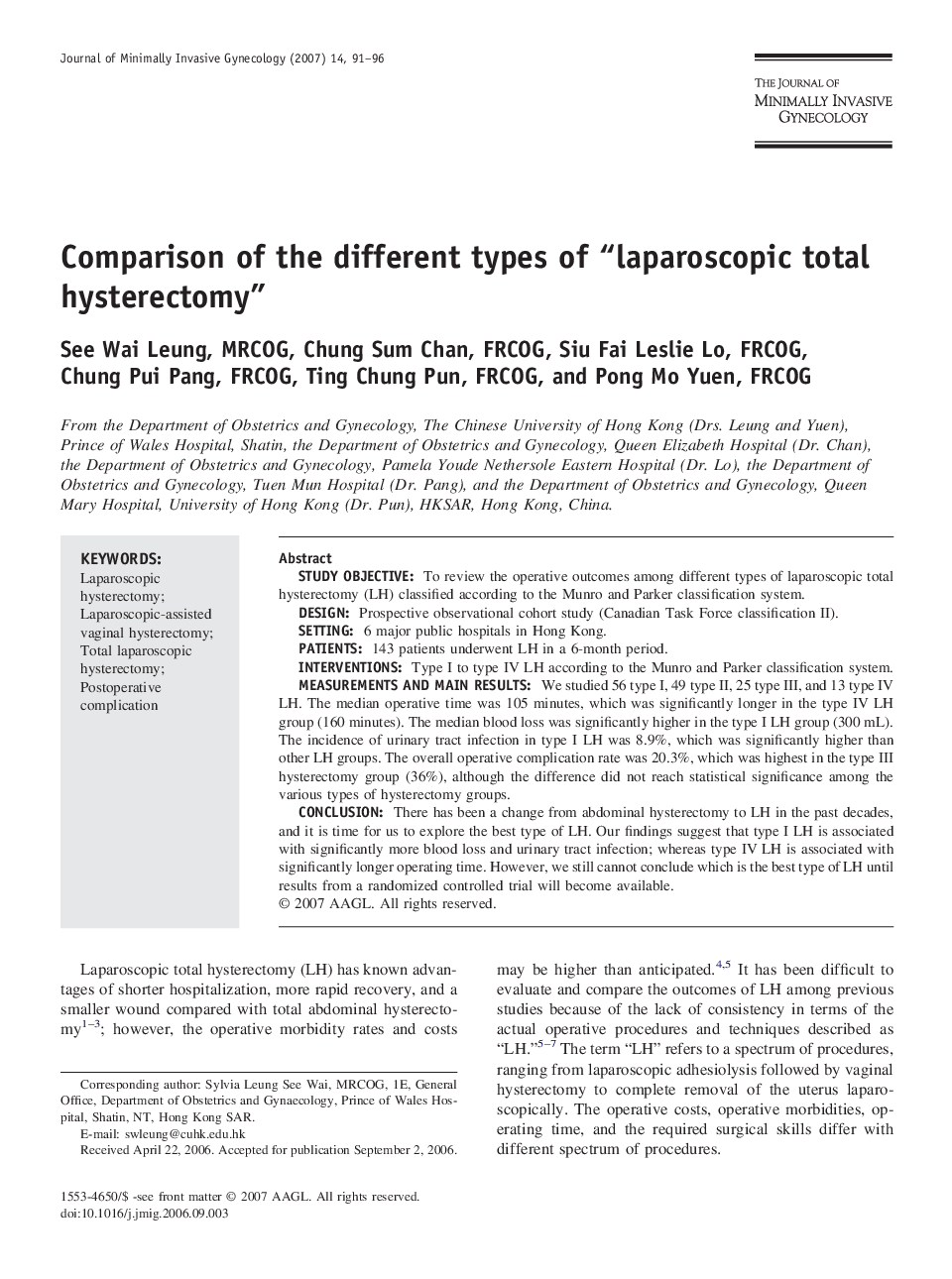| Article ID | Journal | Published Year | Pages | File Type |
|---|---|---|---|---|
| 3962787 | Journal of Minimally Invasive Gynecology | 2007 | 6 Pages |
Study objectiveTo review the operative outcomes among different types of laparoscopic total hysterectomy (LH) classified according to the Munro and Parker classification system.DesignProspective observational cohort study (Canadian Task Force classification II).Setting6 major public hospitals in Hong Kong.Patients143 patients underwent LH in a 6-month period.InterventionsType I to type IV LH according to the Munro and Parker classification system.Measurements and main resultsWe studied 56 type I, 49 type II, 25 type III, and 13 type IV LH. The median operative time was 105 minutes, which was significantly longer in the type IV LH group (160 minutes). The median blood loss was significantly higher in the type I LH group (300 mL). The incidence of urinary tract infection in type I LH was 8.9%, which was significantly higher than other LH groups. The overall operative complication rate was 20.3%, which was highest in the type III hysterectomy group (36%), although the difference did not reach statistical significance among the various types of hysterectomy groups.ConclusionThere has been a change from abdominal hysterectomy to LH in the past decades, and it is time for us to explore the best type of LH. Our findings suggest that type I LH is associated with significantly more blood loss and urinary tract infection; whereas type IV LH is associated with significantly longer operating time. However, we still cannot conclude which is the best type of LH until results from a randomized controlled trial will become available.
